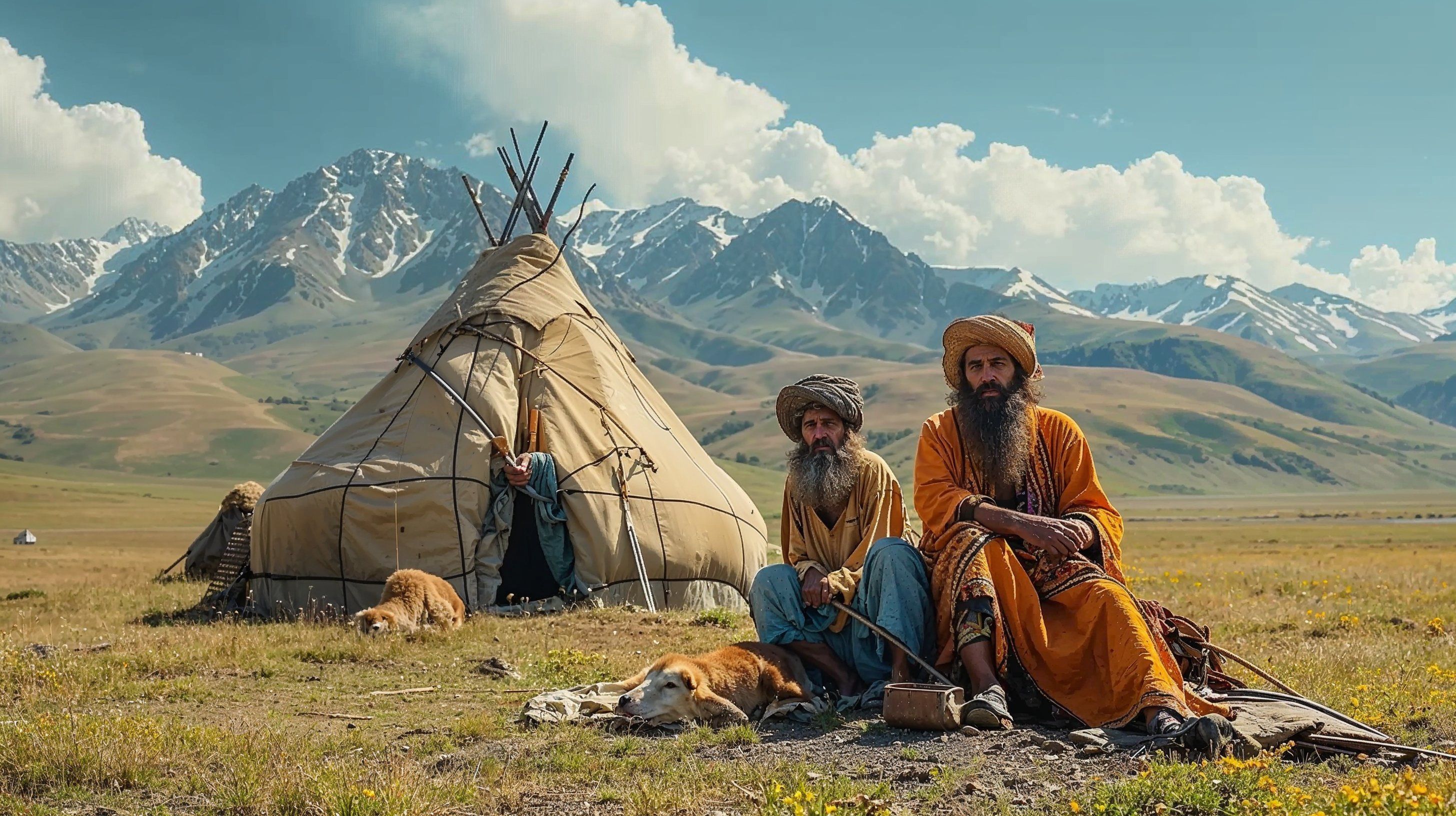16 February 2024
The Pulse of Tradition: Delving into Traditional Nomadic Life.

Press the play button in the top right corner to listen to the article
In the shadow of the digital age, traditional nomadic cultures carry the torch of humanity's earliest wanderlust, moving in harmony with the Earth's natural cycles. This deeper exploration into traditional nomadic life reveals the rich tapestry of customs, challenges, and innovations that mark their journey through the modern world.
Sustaining Ancient Rhythms
At the heart of traditional nomadic life is a profound connection to the environment. Pastoral nomads, with their herds of goats, sheep, camels, or yaks, follow the ancient rhythms of rain and pasture, migrating through deserts, steppes, and mountains. These migrations are not aimless wanderings but meticulously planned routes, often passed down through generations, that ensure the sustainability of the lands they traverse and the well-being of their animals.
For these communities, the animals are more than just livestock; they are central to the nomads' identity, economy, and culture. Products like milk, meat, wool, and hides are not only staples of their diet and wardrobe but also commodities for trade and dowry. The intimate knowledge nomads hold of their environment and animal husbandry is a testament to a sustainable lifestyle honed over millennia.
Cultural Richness and Community Bonds
Nomadic societies are characterized by strong community bonds and rich cultural traditions. Their music, poetry, and dance are vital forms of expression, narrating stories of migration, love, hardship, and the beauty of their lands. Festivals and gatherings, often coinciding with seasonal milestones, reinforce social ties and cultural identity.
The traditional ger (yurt) of Mongolian nomads or the black tents of the Bedouins are marvels of functional design, providing portable and durable shelter. These living spaces are central to nomadic hospitality, with customs of generosity and support deeply ingrained in their way of life.
Facing Modern Challenges
Despite their resilience, traditional nomads face unprecedented challenges in the modern era. Climate change, with its extreme weather patterns, threatens the delicate balance of the ecosystems upon which nomadic livelihoods depend. Desertification, dwindling water sources, and altered migration patterns pose existential threats.
Moreover, political boundaries and land privatization have restricted traditional migration routes, leading to conflicts and forcing many nomads to settle or alter their way of life drastically. The sedentarization policies and the allure of urban life have also drawn younger generations away from nomadic traditions, risking the erosion of their cultural heritage.
Adaptation and Resilience
In response to these challenges, nomadic communities are finding innovative ways to sustain their way of life. Some have integrated modern technologies, like solar panels for power and GPS for navigation, into their traditional practices. Others engage in alternative income sources, such as eco-tourism, where they share their knowledge of the land and traditional lifestyles with outsiders, fostering a greater understanding and appreciation of their culture.
International and local NGOs have also played a role in supporting nomadic rights and sustainable practices, advocating for policies that recognize nomadic land rights and cultural heritage.
Conclusion: A Legacy of Movement
The essence of traditional nomadic life—a deep bond with the earth, a resilient community, and a rich cultural tapestry—continues to thrive amidst the challenges of the 21st century. As custodians of ancient knowledge and sustainable living, traditional nomads offer valuable insights into coexisting with our environment. Their ongoing journey is not just a fight for survival but a testament to the enduring spirit of humanity's nomadic heritage.
The content, including articles, medical topics, and photographs, has been created exclusively using artificial intelligence (AI). While efforts are made for accuracy and relevance, we do not guarantee the completeness, timeliness, or validity of the content and assume no responsibility for any inaccuracies or omissions. Use of the content is at the user's own risk and is intended exclusively for informational purposes.
#botnews















































































